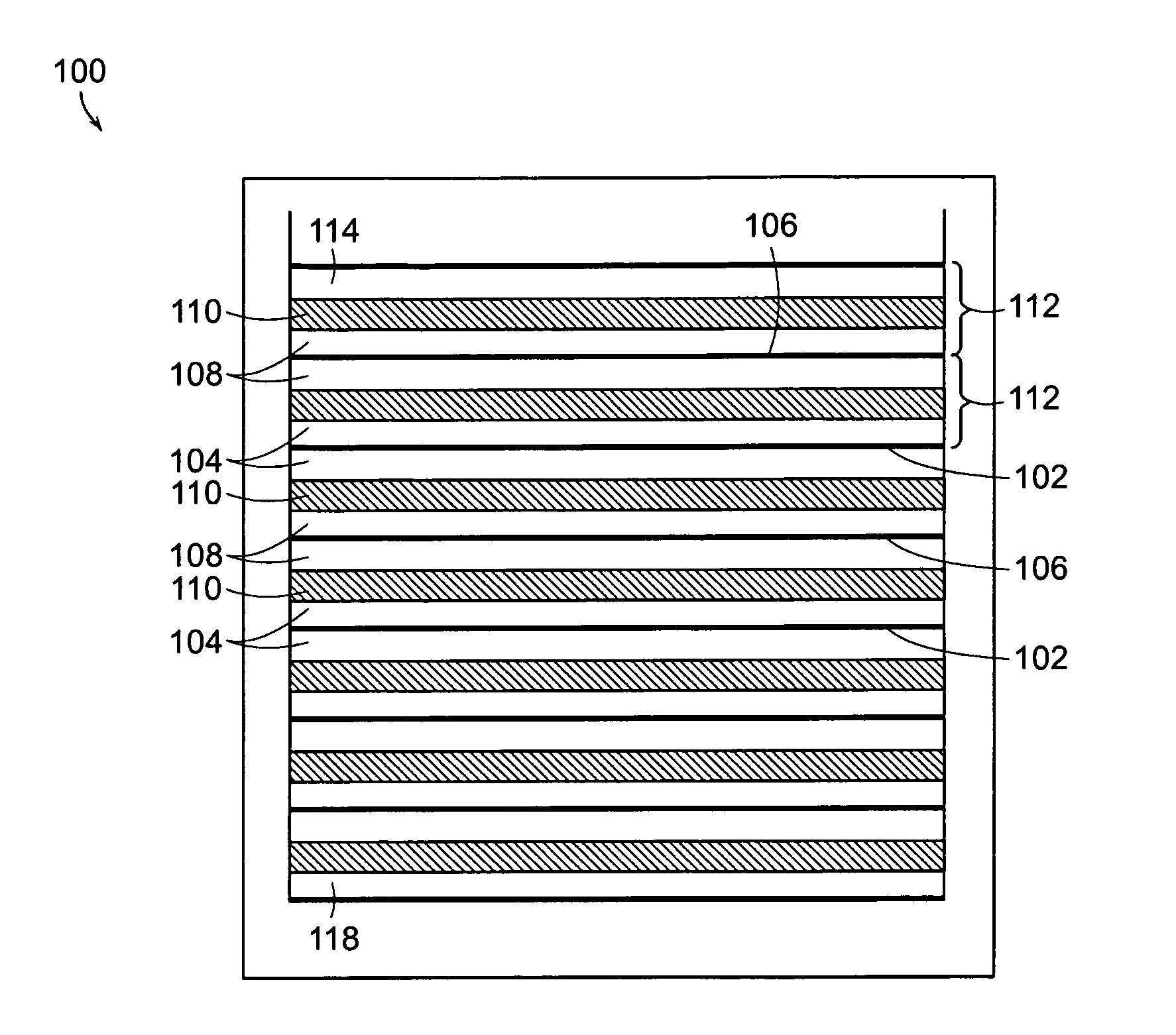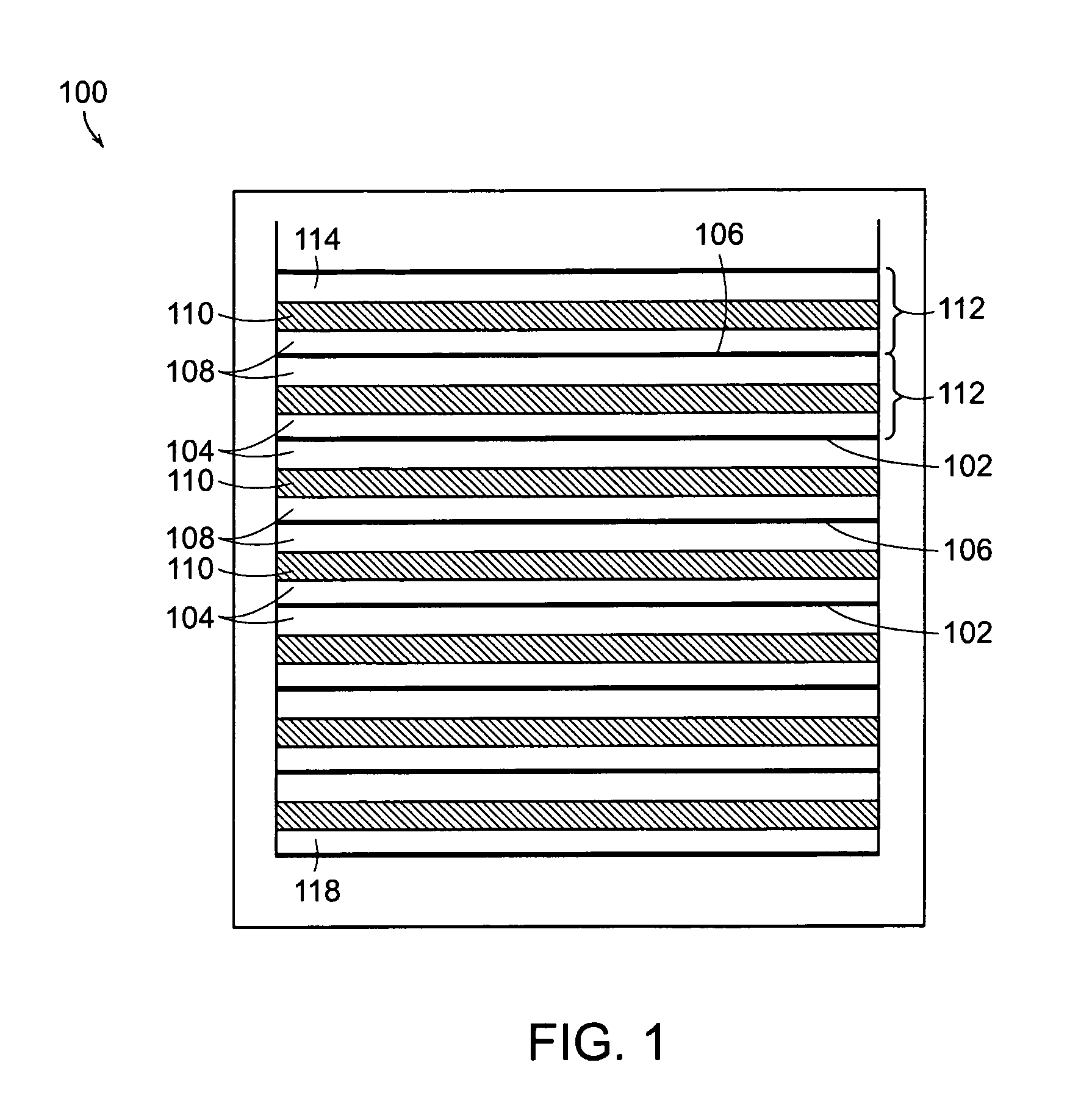Safer high energy battery
a high-energy battery and high-energy technology, applied in secondary cell servicing/maintenance, cell components, grouping of flat cells, etc., can solve the problems of thin electrode, etc., and achieve low electrode rate, high energy density, and high energy density
- Summary
- Abstract
- Description
- Claims
- Application Information
AI Technical Summary
Benefits of technology
Problems solved by technology
Method used
Image
Examples
example 1
[0054]Cells made according to one or more embodiments of the present invention have higher energy and are safer than state of the art prismatic cells as demonstrated by the results of accelerated rate calorimetry; a fully charged, state of the art commercially available 63046 1 Ah prismatic cell was heated at 2° C. / min in an ARC chamber. At 130° C. the temperature of the cell rose sharply as the LCO cathode material went into the well known thermal runaway. The cell bulged excessively and eventually exploded violently and burst open to eject the electrodes from within the metal can (and presumably metal shrapnel from the can itself). Such violent eruption on thermal runaway is clearly an undesired feature of a telecommunications battery pack cell that may be held close to the head during device usage.
[0055]In contrast, when cells made according to the present invention go into the thermal runaway (also at 130° C. and with the same self-heating rate as the comparison cell), the failu...
PUM
| Property | Measurement | Unit |
|---|---|---|
| total thickness | aaaaa | aaaaa |
| thickness | aaaaa | aaaaa |
| total volumetric energy density | aaaaa | aaaaa |
Abstract
Description
Claims
Application Information
 Login to View More
Login to View More - R&D
- Intellectual Property
- Life Sciences
- Materials
- Tech Scout
- Unparalleled Data Quality
- Higher Quality Content
- 60% Fewer Hallucinations
Browse by: Latest US Patents, China's latest patents, Technical Efficacy Thesaurus, Application Domain, Technology Topic, Popular Technical Reports.
© 2025 PatSnap. All rights reserved.Legal|Privacy policy|Modern Slavery Act Transparency Statement|Sitemap|About US| Contact US: help@patsnap.com



